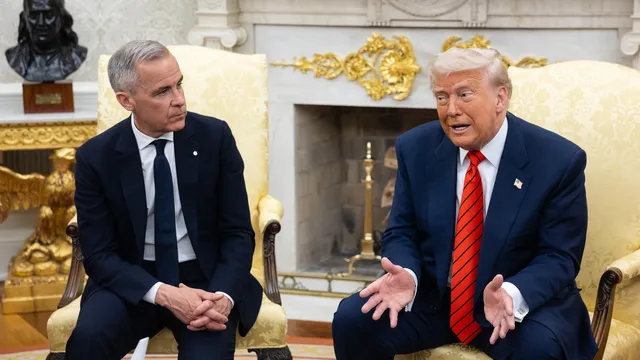Trump Ends Trade Negotiations With Canada Over Digital Services Tax
In a significant move, U.S. President Donald Trump announced the termination of trade negotiations with Canada, citing a contentious digital services tax as the catalyst for this decision. This announcement, made via his Truth Social platform, signals a potential escalation in trade tensions between the two neighboring countries.
The Announcement and Its Implications
Trump declared, "Based on this outrageous tax, we are hereby terminating all trade negotiations with Canada, effective immediately." He emphasized that Canada would soon learn its new tariff rate—a hint that further financial repercussions could be on the horizon for U.S.-Canadian trade relations. This step comes at a time when international trade dynamics are already fragile, raising concerns among businesses and policymakers in both nations.
Understanding the Digital Services Tax
The core issue behind this dispute is the Canadian digital services tax, which was implemented last year. This tax impacts large American technology companies, requiring them to pay a substantial fee to operate within Canada. While Canada’s digital services tax is not a new development, it has recently come under fire from the U.S. government, which views it as discriminatory.
As noted by the Computer and Communications Industry Association, U.S. service providers are facing considerable financial burden, with expectations of paying "several billion dollars in Canada" by the June 30 deadline. This situation has prompted the U.S. to voice its dissatisfaction, initially hoping to negotiate a resolution rather than resorting to punitive measures.
Trump’s Trade Policies and Tariff Strategy
Trump’s announcement comes in the context of an already tumultuous trade climate. While Canada has managed to avoid the brunt of some of Trump’s more drastic tariffs—like the 10% levy imposed on numerous trading partners earlier this year—it is still affected by a different customs regime. This distinction has not shielded Canada from Trump’s broader trade strategy, which has included significant tariffs on steel, aluminum, and automobiles since he returned to the White House in January.
Just last week, Canada stated its intention to adjust its counter-tariffs of 25% on U.S. steel and aluminum, a response to the U.S. doubling its tariffs on these imports to 50%. The Canadian government has put forth a 30-day timeframe for negotiating a new trade agreement to mitigate these escalating tariffs.
A Difficult Relationship
Trump characterized trade relations with Canada as "very difficult," highlighting the complexities inherent in cross-border commerce. The ongoing dispute underscores a broader trend of rising protectionism, with both countries grappling with economic policies that may strain cooperative trade dynamics.
As the situation unfolds, the impact of these tariffs and the potential ripple effects on industries and consumers will be closely monitored. The rhetoric from the U.S. administration signals a willingness to adopt a more confrontational approach, which could lead to further economic repercussions on both sides of the border.
In light of these developments, businesses in both nations will need to prepare for possible adjustments in trade practices and financial strategies, as the new tariffs could have long-lasting implications for the economic landscape in North America.


